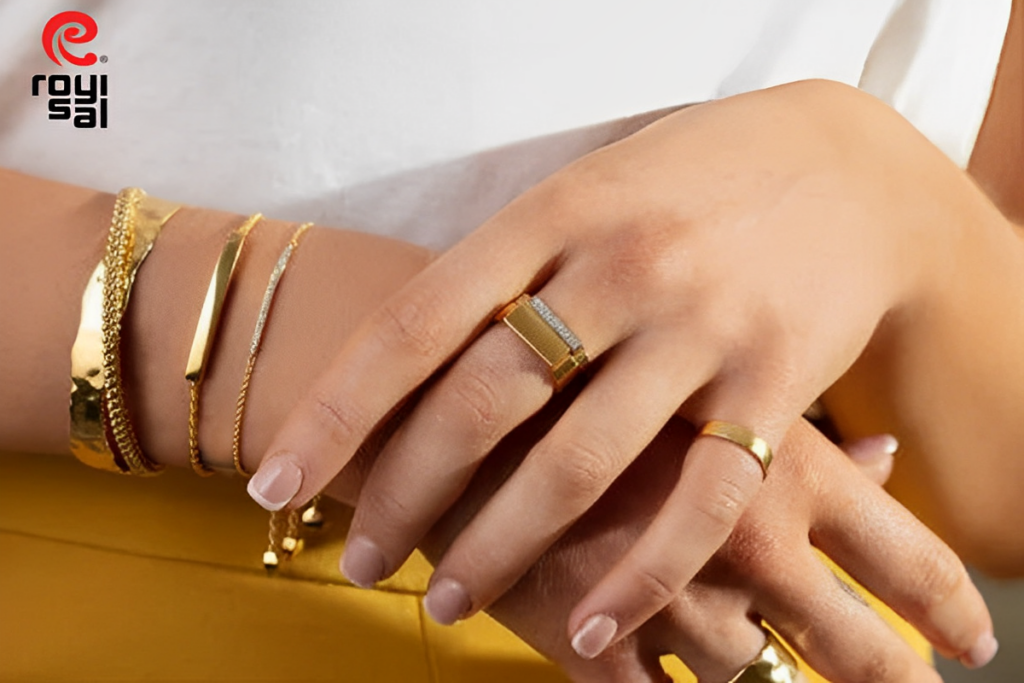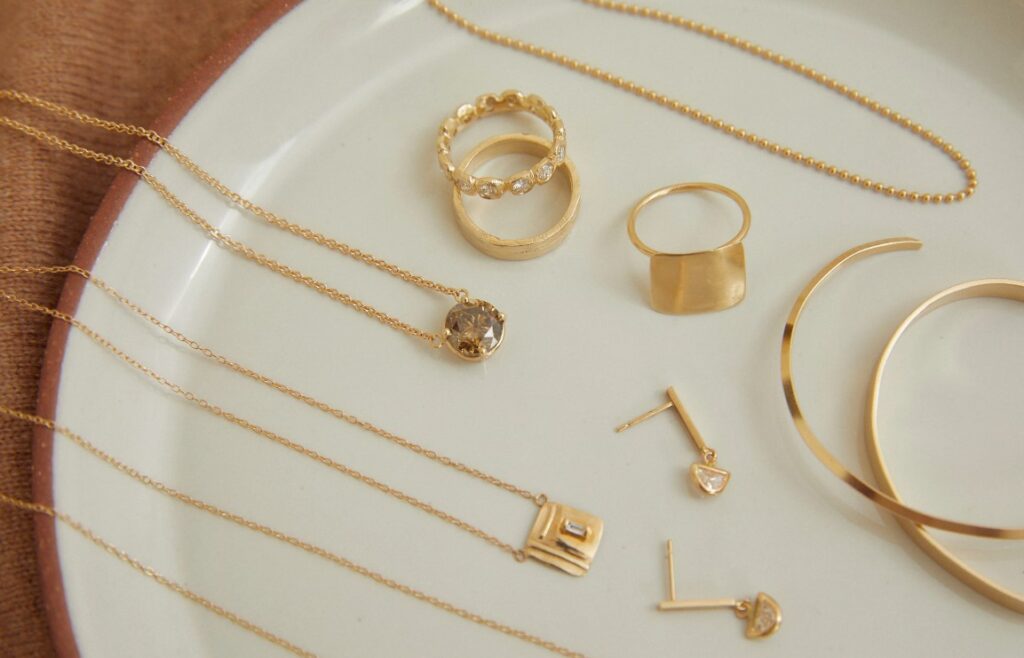
Gold has been synonymous with elegance, authority, and opulence for thousands of years. When crafted by a skilled jeweler, it effortlessly lends prestige to any occasion and fashion.
Of course, that opulence comes with a cost. Thankfully, options are available for those looking for prestige without the price.
To maintain the look of gold jewelry at a fraction of the cost, many turn to gold-plated jewelry. To the casual viewer, gold-plated jewelry can appear remarkably similar to gold jewelry at a fraction of the cost.
However, gold-plated jewelry differs from its more expensive cousin in various ways outside its cheaper price tag. By better understanding the unique characteristics of gold and gold-plated jewelry, you can make a more informed decision about which solution will be best for your next jewelry design.

Understanding gold-plated jewelry
To make the best choice on whether or not gold-plated jewelry will meet your needs, it’s first crucial to understand what exactly gold-plated jewelry is clearly.
When something is referred to as gold plated, a thin layer of gold envelops jewelry made from a non-gold metal or alloy.
So, first of all, what even is gold-plated jewelry? In general, plating is when a piece of jewelry made from a certain metal or alloy is covered with a layer of another metal. For example, a ring in which the base metal is copper or silver, with a layer of gold on the outer surface, would be considered a gold-plated jewelry item.
But how exactly does something become gold-plated?
The process might seem obvious–cover it in gold!–but there’s a little more to it.
When an alloy becomes gold-plated, it is first placed into a solution containing gold. Next, a current of electricity is sent out, triggering an electrochemical reaction that bonds the two metals together.
The next obvious question might be: How thick is the layer of gold on gold-plated jewelry? Are there any set standards?
Unsurprisingly, the amount of gold used for plating varies significantly from one piece of jewelry to the next. Thankfully, however, there are clear standards. The Federal Trade Commission lists it as “heavy gold plated” jewelry whose gold covering is 2.5 or more microns thick and sets a minimum standard for an item to be considered gold plated at 0.5 microns. Other common terms you may hear include “gold electroplate,” for plating 0.175 microns thick, with plating thinner than this frequently being referred to as “gold washed” or “gold flashed.”
Is gold plating right for your next piece of jewelry?
Now that we clearly understand gold-plated jewelry, we can consider its benefits and disadvantages over gold jewelry (it’s more than just cost!)

Why Choose Gold Plated Jewellery?
Gold-plated jewelry offers a variety of advantages that make it highly attractive to many buyers and wearers.
Not only is the cost substantially lower than buying gold jewelry, but–as mentioned–to the casual observer, it can easily look like genuine gold jewelry.
That lower cost opens the door to exciting possibilities. Suddenly, a wearer can make or buy a much larger volume of different designs and styles to perfectly compliment individual outfits or occasions with unique jewelry pieces. As an additional benefit, gold-plated jewelry tends to be much more malleable and durable than jewelry made from pure gold, so you can look forward to accessorizing with it for years to come.
Challenges to using gold-plated jewelry
Of course, there are unique advantages to pure gold jewelry as well.
For example, while it’s true that the base metal used for gold-plated jewelry might be more durable than pure gold, the reality is that the exceptionally thin layer of gold will be highly vulnerable to wearing away or chipping over time. Gold-plated jewelry can also have its gold worn away when immersed at length in the water, so if you plan to swim in your gold-plated jewelry, you may want to reconsider!
Critically, over time, gold-plated jewelry will also tarnish. While pure gold does not tarnish, the base metals commonly used in gold-plated jewelry are much more prone to tarnishing. These base metals’ molecules gradually bleed into the gold layer, weakening the gold plating’s resistance to tarnishing.
Ultimately, having a clear understanding of gold-plated jewelry and its advantages and risks allows you to make more informed decisions when buying or designing your next piece of jewelry.
Of course, if you still have more questions related to the designs of your next piece of jewelry or have any other questions you’d like to share with the experts here at Royi Sal, we’d love to hear from you! As your premiere jewelry partners, we’re always eager to help support your jewelry manufacturing aspirations.
Share this post

